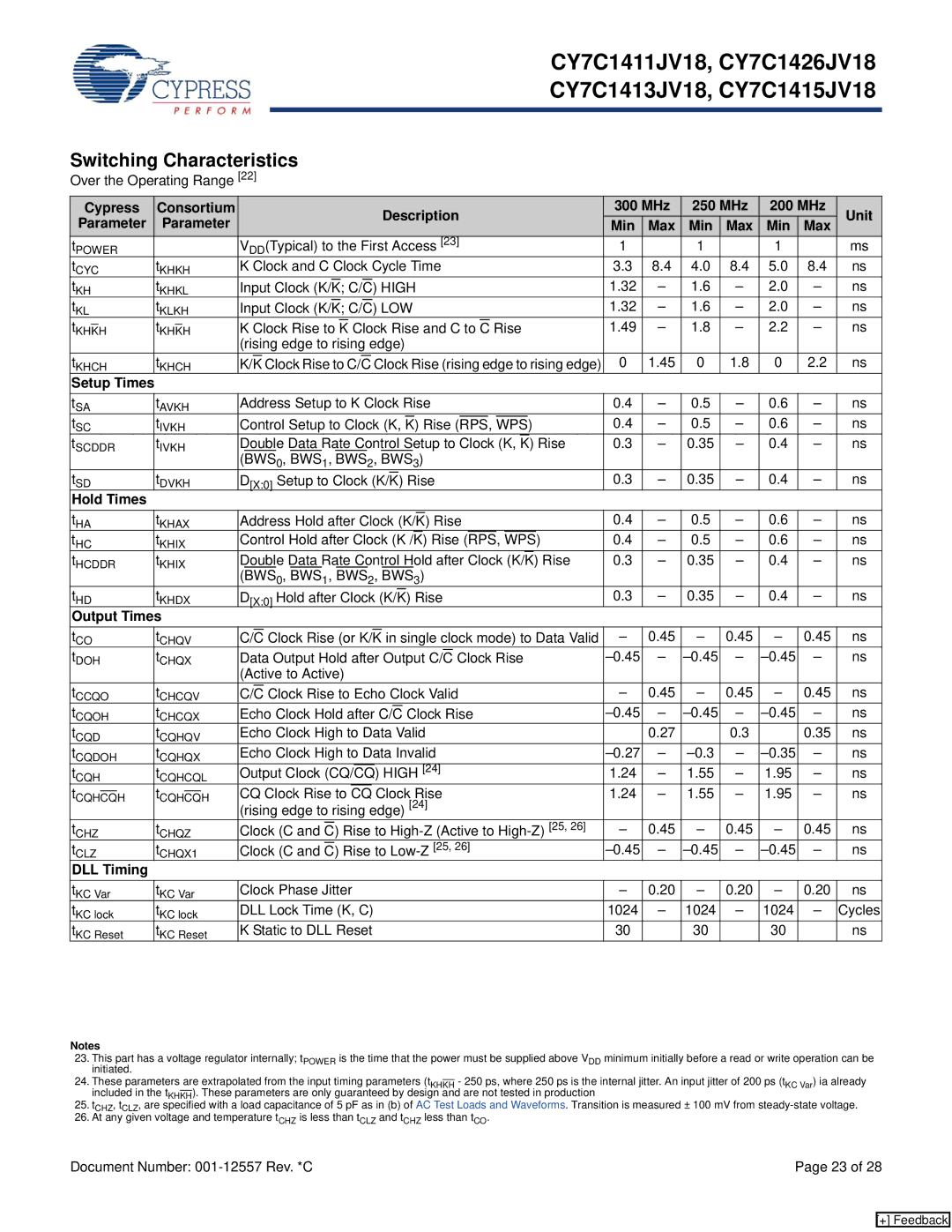CY7C1413JV18, CY7C1426JV18, CY7C1411JV18, CY7C1415JV18 specifications
Cypress Semiconductor, known for its innovative memory solutions, offers a range of high-performance SRAM products suitable for a variety of applications. Among these are the CY7C1415JV18, CY7C1411JV18, CY7C1426JV18, and CY7C1413JV18, which feature advanced technologies and robust performance characteristics.The CY7C1415JV18 is a 4-Mbit high-speed asynchronous SRAM. Designed for applications requiring fast data access, it boasts a maximum access time of just 10 ns. This product operates at a supply voltage of 1.8V, making it ideal for low-power systems. It supports a simple interface, allowing for easy integration into various digital systems. Enhanced data integrity is assured through support for write cycles and concurrent read operations, making it suitable for high-demand environments.
The CY7C1411JV18 is a 2-Mbit synchronous SRAM that offers high speed and low latency. Its access time is optimized for high-performance applications, reaching speeds of up to 10 ns as well. The device is designed with a flexible interface that accommodates both burst and non-burst operations, increasing data throughput for memory-intensive tasks. Like its counterparts, it operates on a low voltage, ensuring minimal power consumption.
Next, the CY7C1426JV18 also belongs to Cypress's high-performance SRAM family, providing 2-Mbit storage capacity with excellent read and write performance characteristics. This SRAM features an advanced design that supports pipelined operations, allowing multiple memory accesses to occur simultaneously. This feature effectively maximizes data transmission rates, making it particularly appealing for applications needing rapid data processing.
Finally, the CY7C1413JV18 offers 1-Mbit of SRAM capacity optimized for speed and efficiency. With an access time of 9 ns, it is among the fastest products in its category. The device features advanced functionalities enabling compatibility with various hardware configurations, thus facilitating its use in a wide array of embedded systems.
All these SRAM devices feature low power consumption, making them suitable for battery-operated devices and energy-efficient applications. Their ability to operate at lower voltages while maintaining high performance is a key characteristic that aligns with modern design requirements. The combination of speed, low power, and flexibility makes the CY7C1415JV18, CY7C1411JV18, CY7C1426JV18, and CY7C1413JV18 highly sought after in industries ranging from telecommunications to consumer electronics, solidifying Cypress's reputation as a leader in memory solutions.

